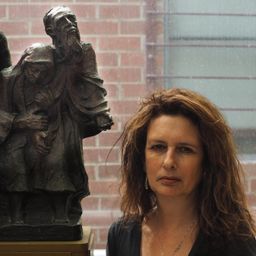12.00 “To Learn, to Feel, to Remember, to Act?”: Understanding Visitor Experiences at Sites of Genocide Through Testimony
My Session Status
The curation of genocidal memory within museums and related heritage sites has a number of different rationales: it preserves memory and facilitates its mobilization in various community and political contexts; it documents and highlights evidence of crimes, thereby permitting such spaces to serve as enduring “witnesses” to atrocity; and it facilitates civic renewal by promoting reconciliation, combatting denial, challenging racism, and citizenship education.
A substantial and growing body of work on affect, performance, and memory is investigating and theorizing the relationship between sites of atrocious memory and their visitors (e.g. Roger Simon, Jennifer Carter, Paul Williams, Philip Stone, etc.). A key aspect of this relationship is pedagogical, and a great deal of scholarly attention has been devoted to rethinking the educational potential of memorial sites and museums. However, relatively fewer studies examine this relationship from the visitor’s perspective.
This perspective matters crucially to any assessment of a museum’s pedagogical efficacy. How visitors feel and are made to feel by museum exhibits will obviously affect what they are able to take away from attempts to represent histories of atrocious violence. Prominent in its ability to marshal, consolidate, and direct visitors’ feelings is eyewitness testimony, whether written, available orally or on video, or experienced through another technology such as virtual or augmented reality. Such testimony remains central to a museum exhibition’s transformative and pedagogical power. It provides those exposed to it with what Roger SImon has evocatively termed “counsel.” It also assists in the construction of broadly inclusive “communities of memory” within which it becomes possible to stress our continuousness with the past and its capacity to “unsettle” us. As Roger Simon rightly notes in “The Paradoxical Practice of Zakhor,” testimony serves to initiate “forms of learning that shift and disrupt the present, opening one to new ways of perceiving, thinking, and acting.”
This paper will discuss some current work on the institutionalized representation of a wide variety of historical episodes of organized mass violence including: the Armenian genocide, Canadian settler colonialism, and the Holocaust. The representations to be discussed are located in genocide sites, human rights museums, art galleries, and museums in the Jewish diaspora. Participants will investigate the role of video, oral, written, and digitally augmented testimony in conveying information and eliciting feelings about the atrocious past, and offer explanations of how testimony functions in exhibition spaces as well as atrocity sites. Questions will be raised about the kinds of feelings privileged by genocide museums, about these institutions’ relationship to ideologies of social transformation, and about newly available concepts and methodologies that are improving our understanding of the encounter between visitors, sites, and the representation of what Deborah Britzman has influentially termed “difficult knowledge.”



Discussion